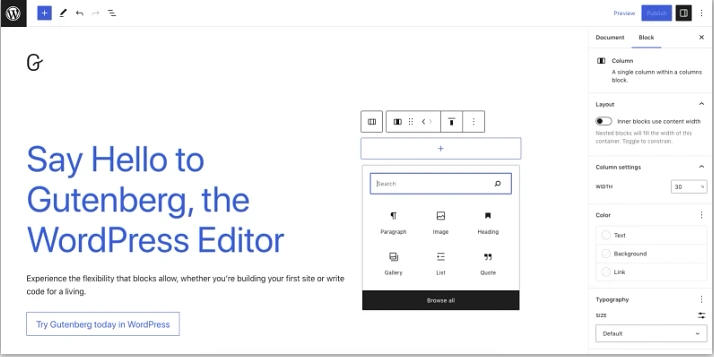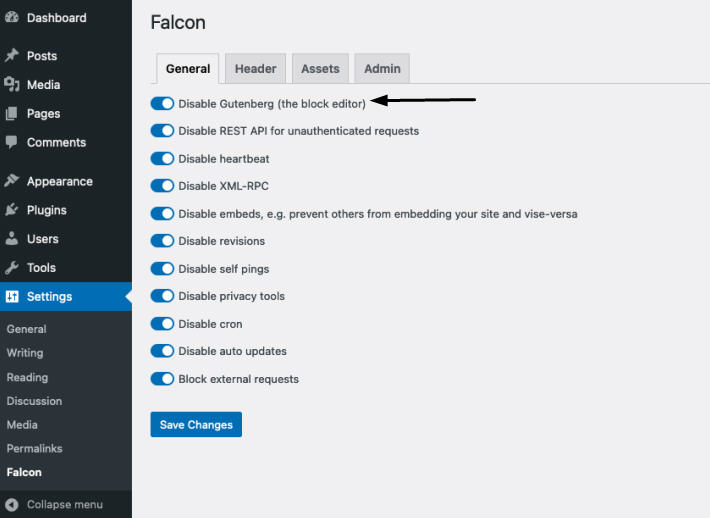What is Classic WordPress Editor?
Since its inception until Nov 2018, the Classic WordPress Editor in its current format, powered by the open-source TinyMCE editor - hasn't changed much
I personally prefer the classic editor as it is easier for me to create post using it. Also, I have better control over the design, and I can fine-tune the look of the site with the old editor.
It was a simple HTML editor where you can type content and format easily. You can toggle Text and Visual mode to see the content and the source HTML code respectively. However, classic editor was missing basic elements like Tables and Social icons but those things you can add using templates. Unfortunately, people used to work with Classic editor for years do not like the new block editor. This is indicated with Classic editor plugin has more than 5 million active installation years after removing it from the WordPress core.
Classic editor will not affect much loading time when you open the editor for creating or modifying a post. Unfortunately, Gutenberg needs plenty of scripts and make your admin panel very slow.
You can read here in this post why people love the Classic Editor
What is Gutenberg?
Gutenberg is a block-based editor for the WordPress platform. It was introduced in WordPress 5.0, which was released in November 2018. Gutenberg is now the default editor for WordPress installations.
It's a block-based WordPress editor designed to be more like popular page builder tools. It enables you to add elements like images, paragraphs, lists, and buttons to a page or post with customizable blocks.
Although Gutenberg intends to provide an intuitive interface, it may actually be harder to learn than the Classic Editor due to its wide range of options and settings.
If you're switching from the Classic to the Block editor, it may break your site. You might have to go through every single post and page and redesign them with Gutenberg.
Now that you know why 5+ million users still using old Classic editor plugin. In the past few years, instead of removing the classic editor completely, WordPress added classic block in Gutenberg. With WooCommerce and bbPress existing, we do not see the end to classic editor. At this point, you can use Gutenberg only when you don't need classic editor. Otherwise, you can continue with classic editor for few more years till the time of stabilizing Gutenberg interface.
Why disable Gutenberg?
Gutenberg is the new editor added in WordPress 5.0. This editor promises to bring a whole new change and experience to users.
Nevertheless, after launching, it received plenty of criticism (more than praises) as it caused some problems for users, such as:
- Heavy JavaScript features make the editing experience bad or not smoothy
- Articles editing, images inserting are a bit more difficult than the previous editor
- Unable to use powerful features of the editor toolbar brought by the TinyMCE Advanced plugin.
- Can't integrate the short-code buttons from other plugins into the editor toolbar.
Therefore, while Gutenberg is not really stable, it should be disabled. Otherwise, if you are using other plugins and you have conflicting problems, you should disable it and go back to the old editor interface.
Besides, Gutenberg outputs a lot of CSS and inline styles in your website's head. Here is a screenshot on left:
How to disable Gutenberg?
This plugin disables the new Gutenberg Editor (aka Block Editor) and replaces it with the Classic Editor. We recommend the plugin Falcon - an optimization plugin from us (eLightUp) to disable Gutenberg. It offers a lot of optimization tweaks like:
- Disable Gutenberg
- Disable emojis
- Cleanup the header
- Asynchronous load CSS
- Cleanup menu class
- and many more features
It's very lightweight and requires little configuration.
If you're a Sellcloud customer, this plugin will be auto installed on all your Wordpress sites be default. You need to select Disable Gutenberg and save the settings on the Falcon plugin.



